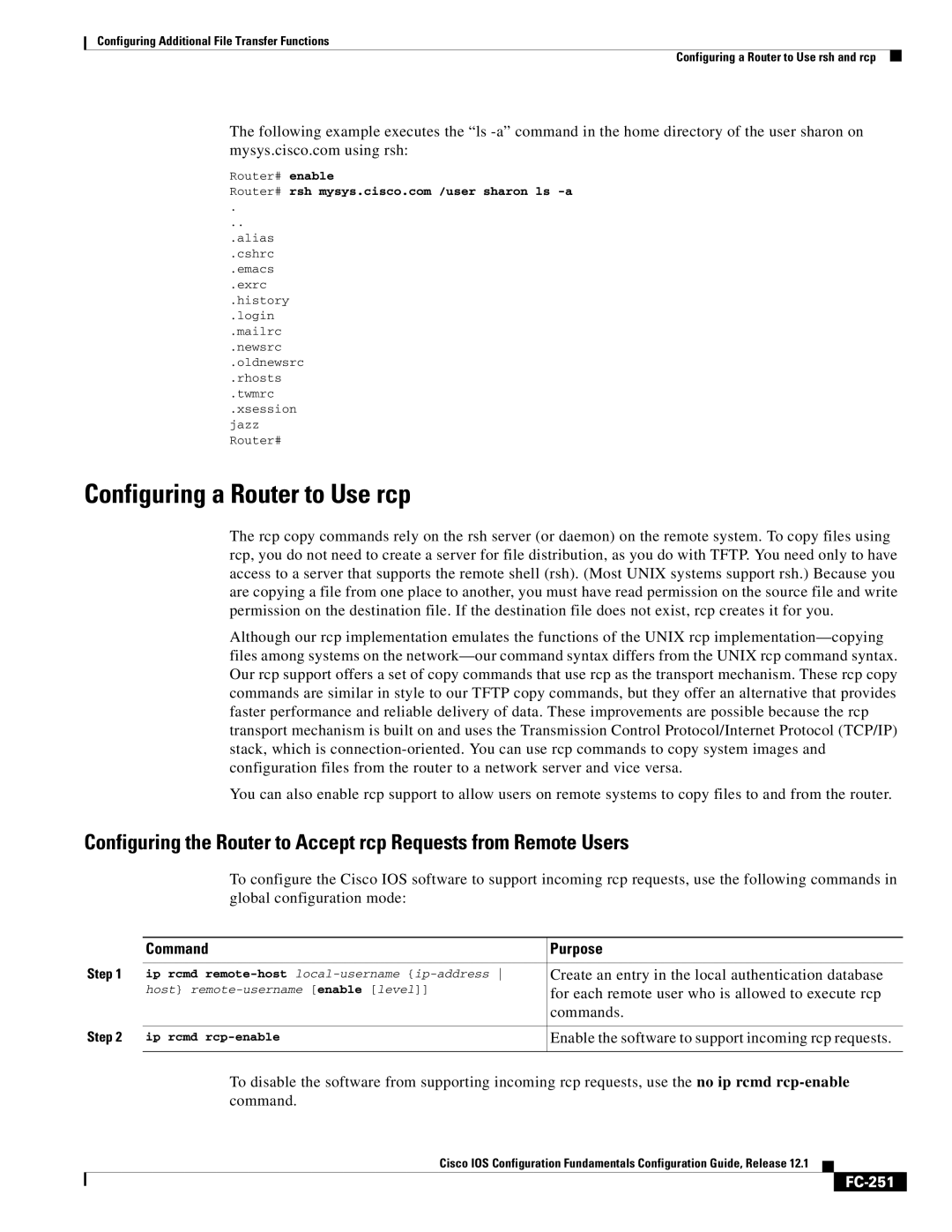
Configuring Additional File Transfer Functions
Configuring a Router to Use rsh and rcp
The following example executes the “ls
Router# enable
Router# rsh mysys.cisco.com /user sharon ls
.
..
.alias
.cshrc
.emacs
.exrc
.history
.login
.mailrc
.newsrc
.oldnewsrc
.rhosts
.twmrc
.xsession jazz Router#
Configuring a Router to Use rcp
The rcp copy commands rely on the rsh server (or daemon) on the remote system. To copy files using rcp, you do not need to create a server for file distribution, as you do with TFTP. You need only to have access to a server that supports the remote shell (rsh). (Most UNIX systems support rsh.) Because you are copying a file from one place to another, you must have read permission on the source file and write permission on the destination file. If the destination file does not exist, rcp creates it for you.
Although our rcp implementation emulates the functions of the UNIX rcp
You can also enable rcp support to allow users on remote systems to copy files to and from the router.
Configuring the Router to Accept rcp Requests from Remote Users
To configure the Cisco IOS software to support incoming rcp requests, use the following commands in global configuration mode:
| Command | Purpose | ||
Step 1 |
|
|
|
|
ip | rcmd | Create an entry in the local authentication database | ||
| host} | for each remote user who is allowed to execute rcp | ||
|
|
|
| commands. |
Step 2 |
|
|
|
|
ip | rcmd | Enable the software to support incoming rcp requests. | ||
|
|
|
|
|
To disable the software from supporting incoming rcp requests, use the no ip rcmd
Cisco IOS Configuration Fundamentals Configuration Guide, Release 12.1
